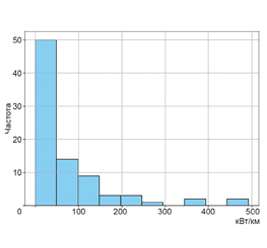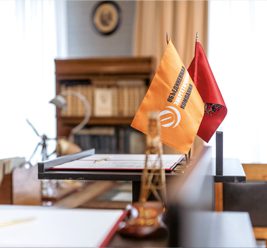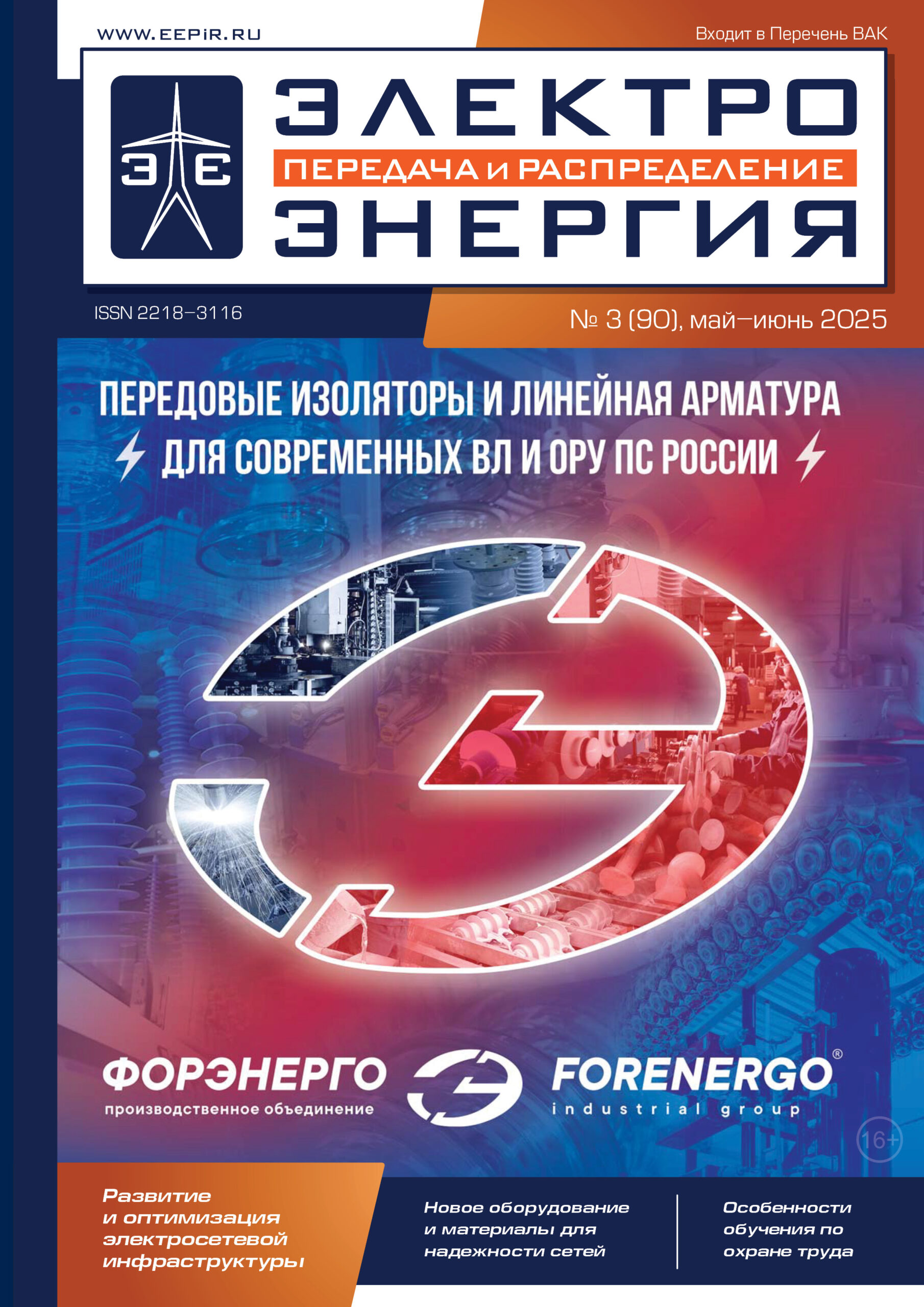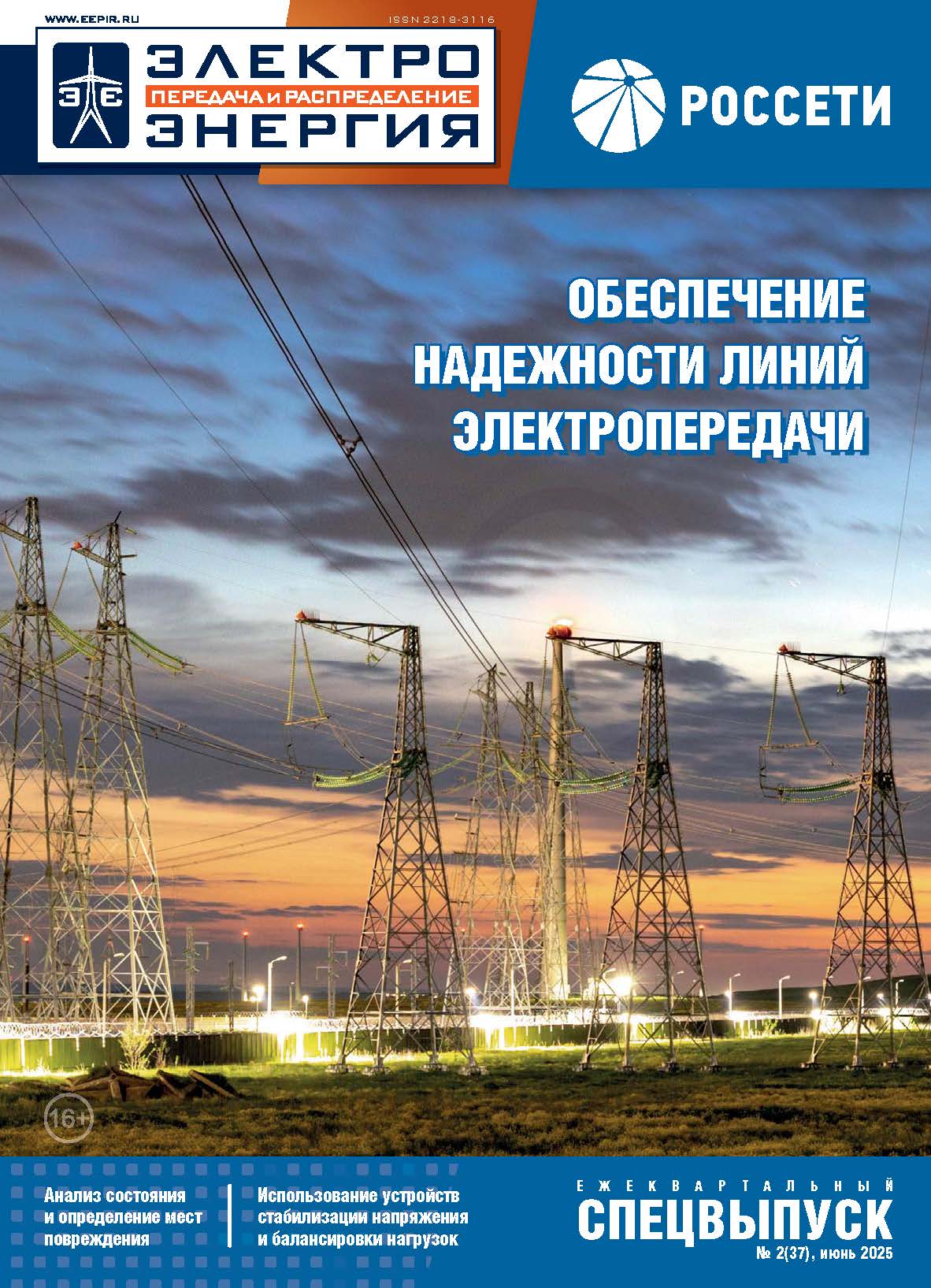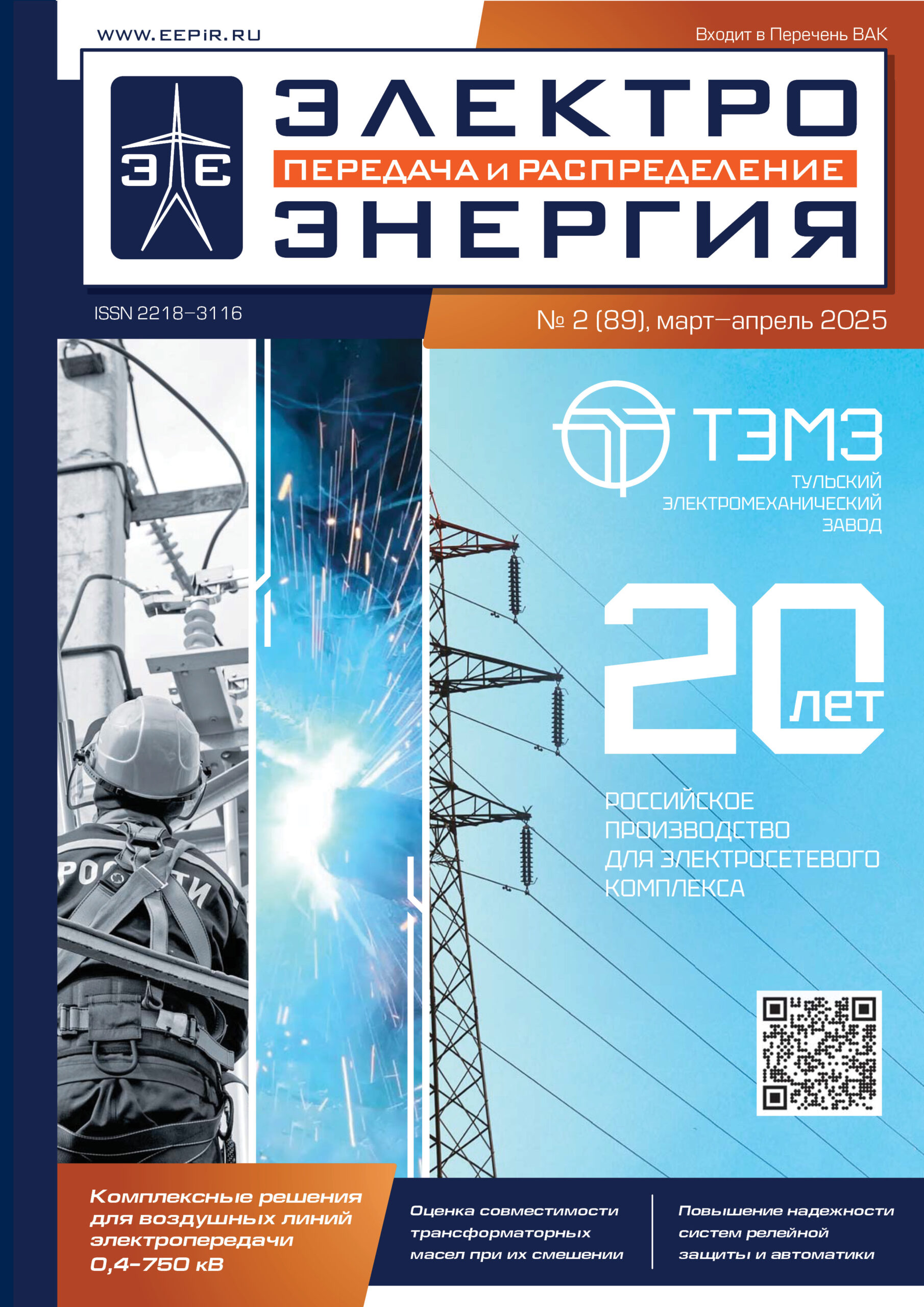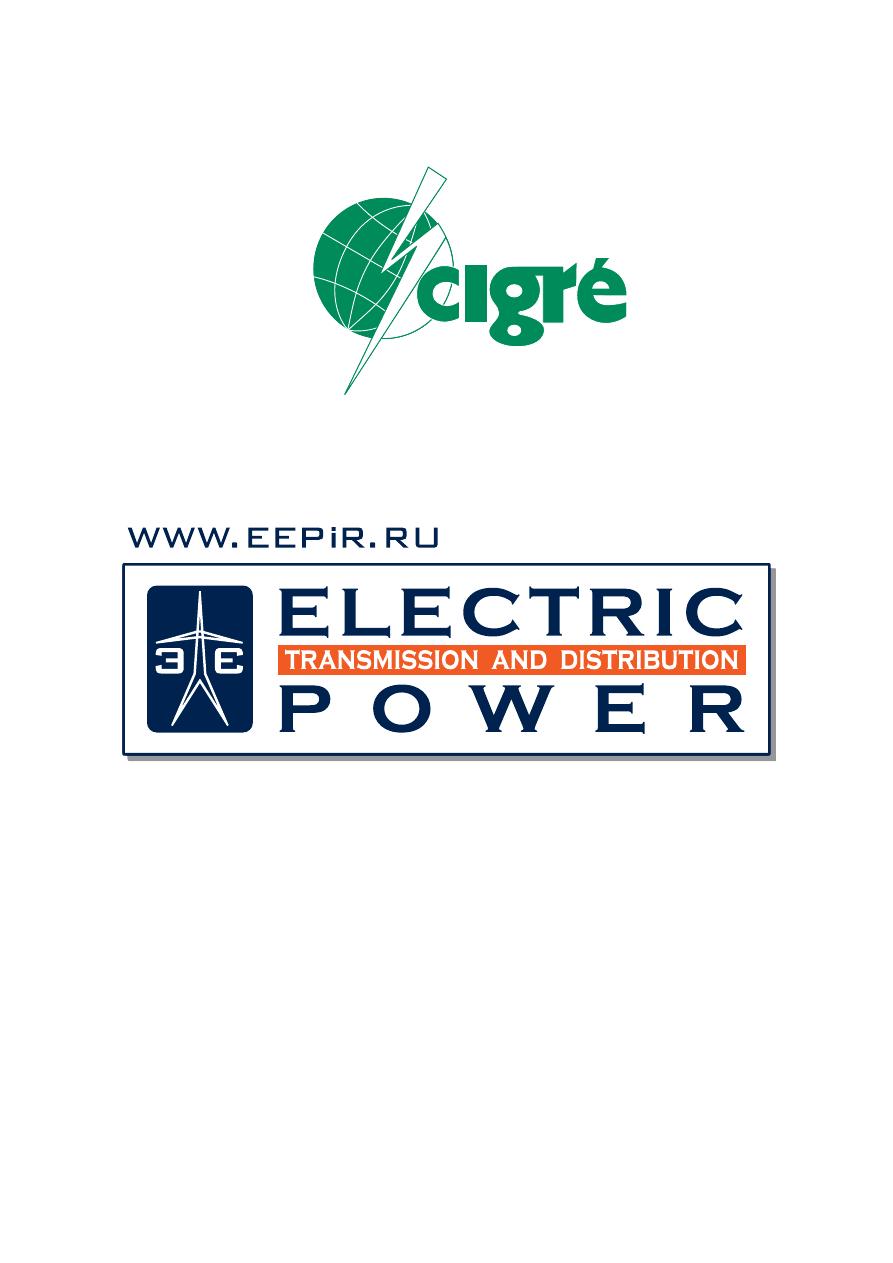
The MAIN JOURNAL for POWER GRID SPECIALISTS in RUSSIA
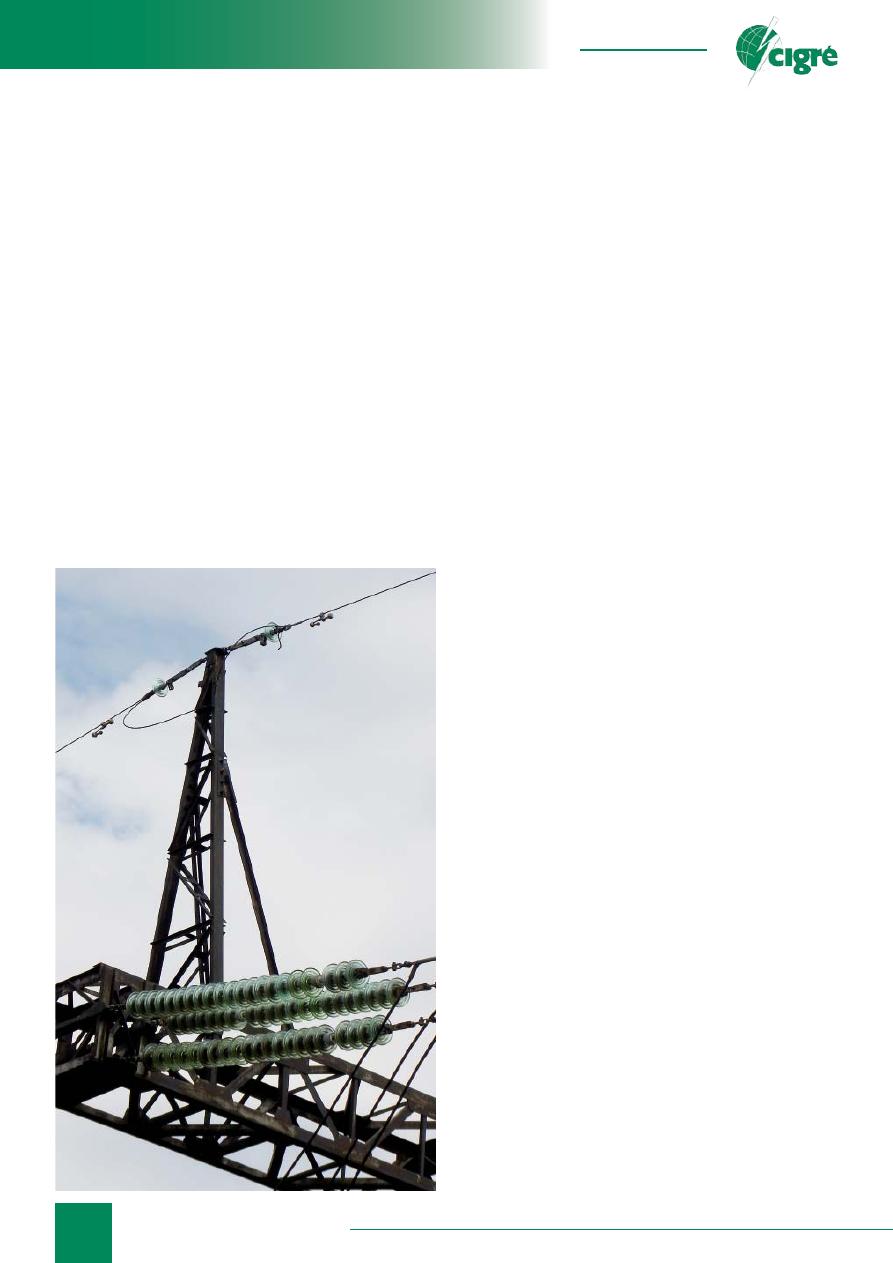
30
August 25–29, France, Paris
Grid Control
A
long with the standard information
fi
ber-
optic cables (FOC), made with dielectric self
supporting cables, overhead ground-wire
cables made of steel wires with different
coatings containing stainless steel module which
comprises optical
fi
bers in hydrophobic semi-liquid gel
are widely used (OPGW). This design provides necessary
mechanical strength and is a product of dual purpose: it
performs the traditional role of protecting power lines
from lightning strikes and used as communication and
data transfer cable.
OPGW must satisfy JSC FGC UES traditional
requirements to overhead ground-wire cables: mechanical
strength, corrosion resistance, resistance to lightning
discharges, Aeolian vibrations, Galloping, as well as short
circuit withstand capability.
Steel wire used in OPGW layers must be protected
against corrosion, therefore zinc or aluminum coatings,
signi
fi
cantly more resistant to oxidation than steel core,
are used. Resistance to corrosion and speci
fi
c conductivity
of aluminum coating is slightly higher than zinc, however,
such coatings have a number of disadvantages. Outdoor
contact of stainless steel and aluminum causes active
corrosion: atmospheric salt and chemical contaminations
on the surface of the metal act as the electrolyte and lead
to accelerated destruction of aluminum. Therefore the
international standard IEEE-1138-2009 for zones with
high corrosive activity, which include all industrial and
Temperature and Current
Density Simulation in Overhead
GroundWire Cable with Fiber
Cable (OPGW) under Short
Circuit Current Passage
Leonid GUREVICH (
Леонид
ГУРЕВИЧ
),
Vladimir DANENKO (
Владимир
ДАНЕНКО
),
Dmitry Pronichev (
Дмитрий
ПРОНИЧЕВ
),
М
ikhail TRUNOV (M
ихаил
ТРУНОВ
),
Volgograd State Technical University
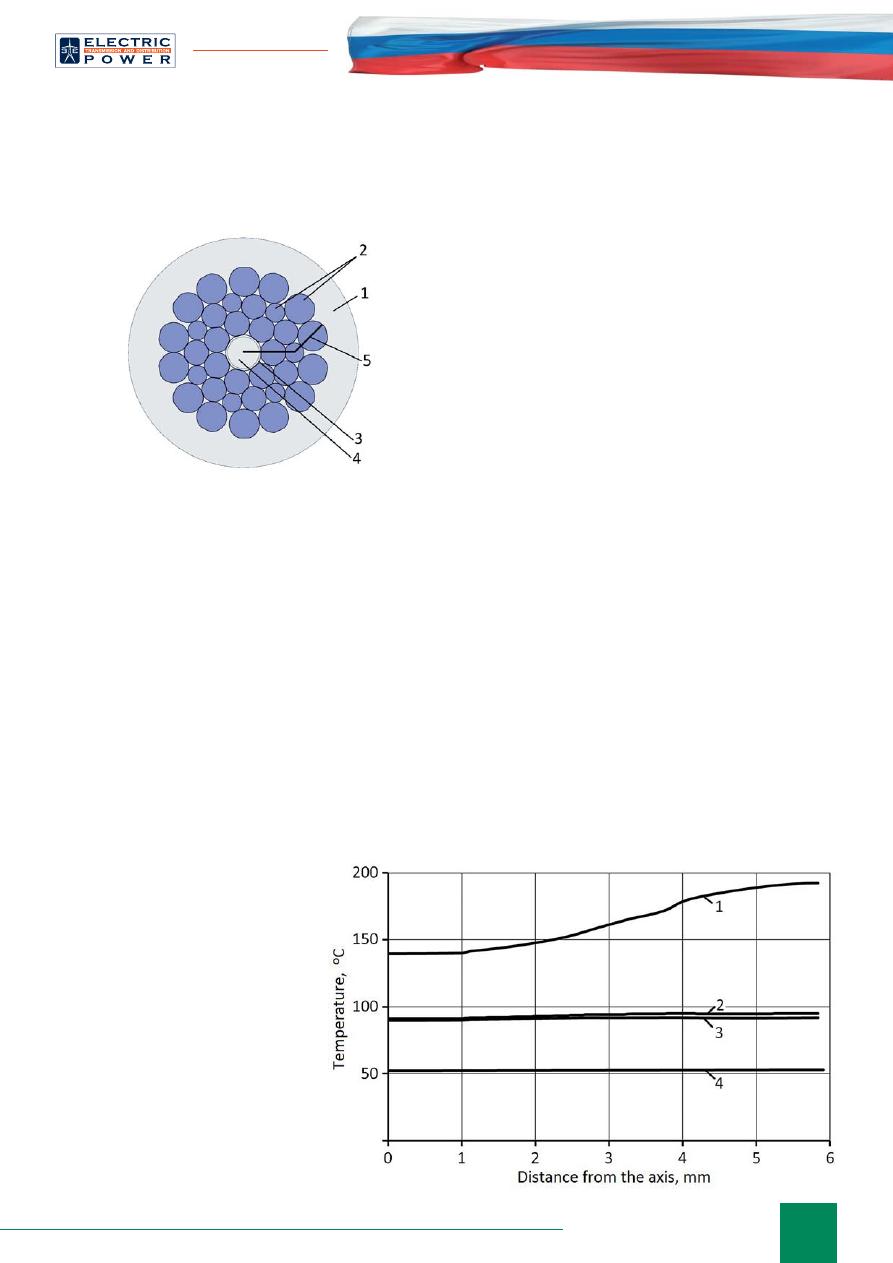
31
info@eepr.ru, www.eepr.ru
densely populated areas, prohibits the usage of OPGW
optical module made of stainless steel and aluminum
coated wires.
Moreover, the comparative tests to withstand lightning
charge up to 110 coulomb carried out on “Four-part
lightning current generator” (GTM-4) test bench in
Moscow Power Engineering Institute under the same
tension revealed that shield wire made of aluminum-clad
steel wire suffered the greatest damage.
OPGW usage requires to calculate thermal resistance,
provided that not only residual mechanical strength of
the cable, but also effective heat removal from the optical
module are considered. Regulations for design of
fi
ber-
optic communication lines on OHL
require thermal stability analysis of
optical cable when subjected to fault
currents.
OPGW thermal withstand analysis
included the following calculations:
• dynamic magnetic
fi
eld caused
by the AC pulse frequency of 50
Hz and a duration of up to 1 s in
order to obtain the current density
distribution in each of the cable
conductors, depending on the time;
• unsteady temperature
fi
eld using
Joule losses as the heat source.
The simulation used Magnetic
Fields and Heat Transfer in Solids
modules license software package
COMSOL Multiphysics, capable of
solving partial differential equations.
For simulation diagram of ground
wire with grade OPGW 11,0/
Е
1(12)-
MZ (ground wire with diameter
11.0 mm with built-in optical
Fig. 1. OPGW thermal withstand capability
design diagram: 1 — air; 2 — steel wire;
3 — central tube; 4 — optical
fi
bers in
hydrophobic gel; 5 — the line along which data is
presented in Fig. 2.
Fig. 2. Temperature distribution in OPGW along the line shown in
Fig. 1 at
J
fc
= 4.3 kA current through 1 s:
1 — uncoated steel wires, 2 — zinc coating, 3 and 4 — aluminum
coating, thickness 20 and 260
μ
m
communication cable) made according to the technical
conditions enterprise standard 71915393-TU 113-2013
(Fig. 1) was used.
While thermal analysis four possible variants of steel
wire surface coating were compared:
• steel rods with zinc coating for particularly harsh
environment operation (corresponds to OPGW really
made by Severstal-Metiz JAC according to enterprise
standard 71915393-TU 113-2013);
• steel rods without coating;
• steel rods with aluminium coating which thickness
corresponds to zin
с
coating of
fi
rst variant (20
μ
m);
• steel rods with aluminium coating with volume
aluminium content up to 25%.
The simulation results were veri
fi
ed by experimental
data of
fi
eld tests in OPGW high voltage equipment test
center of JSC NTC FGC UES showing that 1 second
passage of 4.3 kA short circuit current increased cable
temperature by an average of 88°C.
It was found that current density in uncoated steel wire
increases with distance from the axis of the cable, which
leads to substantial increase in temperature in the outer
wire layers (Fig. 2).
The use of zinc or aluminum coating results in
predominant current
fl
ow in them (current density in these
coatings respectively is 4 and 9 times the current density
in the carbon steel core). The difference in current density
in external and internal layers is not signi
fi
cant. Under 1
second fault current
J
fc
= 4.3 kA the use of coating zinc
reduced the temperature in optical module area by 35°
C and in the outer layer — by 83° C. The use of 20
μ
m
aluminum coating with increased electrical conductivity
allows to further reduce the temperature in the optical
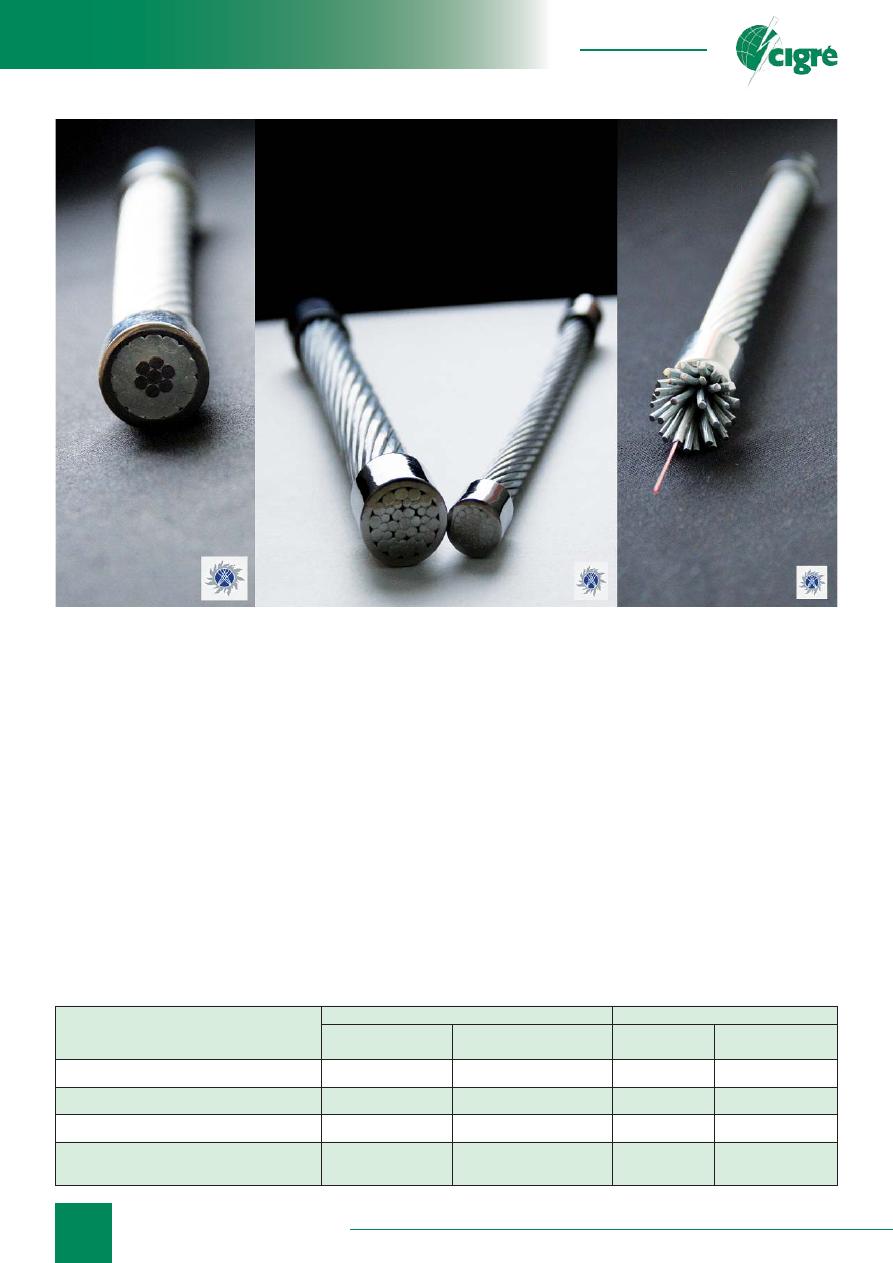
32
August 25–29, France, Paris
Grid Control
module by 15° C, however, in the case of both zinc and
aluminum coatings temperatures lie in the safe range and
do not lead to degradation of optical properties of optical
fi
ber. During simulation the increase of aluminum coating
thicknesses to 25% volumetric content provided under
selected current value of
J
fc
= 4.3 kA temperature increase
only up to 52°C. This aluminum content is too high with
respect to temperature stability at current
J
fc
= 4.3 kA and
is appropriate only at
J
fc
= 6.2—6.3 kA currents.
Speci
fi
c resistance/cable coating dependence is often
not analyzed in choosing OPGW wire coating material.
For OPGW under consideration when using uncoated
steel wires DC resistance value
R
= 3.1 ohm/km, with
zinc coating
R
= 2.2 ohm/km, with 20
μ
m thick aluminum
coating
R
= 1.9 ohm/km.
Shield wire DC resistance reduction when replacing zinc
coating for aluminum will inevitably lead to an increase
in forced and active components of fault current that can
neutralize determined by laboratory testing and modeling
the lower values of temperature
fi
elds in ground steel wires
with aluminum coating over wires with zinc coating.
Change in strength characteristics and critical de
fl
ection
for OPGW made by Volgograd Af
fi
liate of Severstal-
Metiz when replacing steel galvanized rod of 1770 MPa
marking group with steel aluminized one with aluminium
volume content 25% was evaluated. Cross-sectional area
of all wires in OPGW of existing construction is 83.59
mm
2
, approximate weight of 1000 m lubricated ground
cable is 695 kg and actual aggregate breaking strength is
at least 147 kN. OPGW coating changed, the weight is
reduced to 515 kg. Aluminum-coated steel wire tensile
strength
σ
bim
calculated according to the additivity concept
is 1342 MPa and actual aggregate breaking strength of all
wires is less than 112 kN.
Table 1. Calculation of linear and speci
fi
c loads in OPGW under its own weight, the weight
of ice and wind pressure
Load Designation
OPGW with Galvanized Rods
OPGW with Aluminized Rods
Linear Load, N/m
Speci
fi
c Load, MPa/m
Linear Load,
N/m
Speci
fi
c Load,
MPa/m
from proper weight
6.82
0.0815
5.05
0.0604
from glaze ice weight
19.11
—
19.11
—
from wind pressure while glaze ice
24.72
—
24.72
—
resultant from proper weight, glaze ice
weight and wind pressure while glaze ice
40.22
0.6415
39.11
0.6238
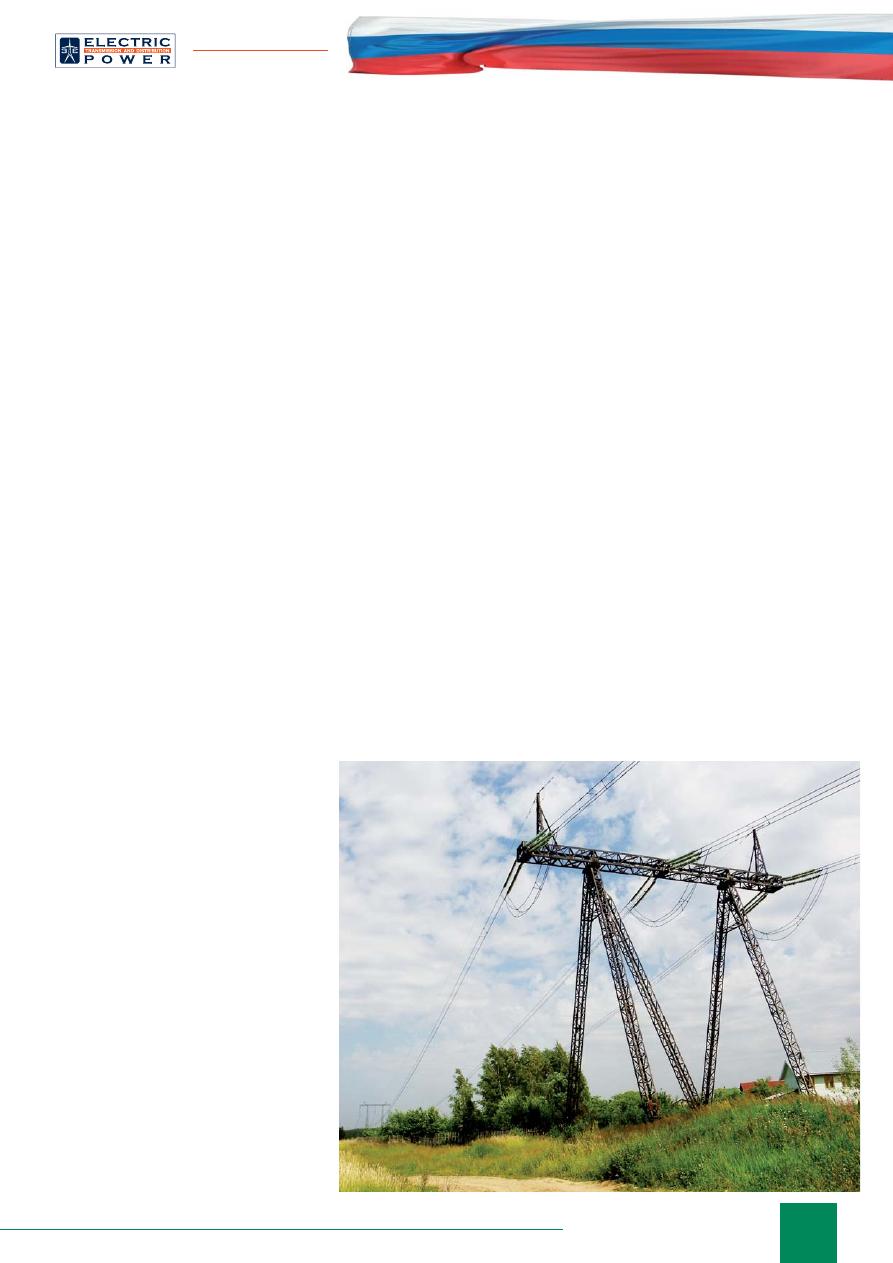
33
info@eepr.ru, www.eepr.ru
When using OPGW in Russian area of the third groups
by wind pressure (1 time per 25 years wind pressure up to
0.67 kPa) and by glaze ice (1 time per 25 years standard
thickness of glaze ice layer up to 20 mm) calculation
according to EIC-7 results in the following values of
linear and speci
fi
c loads (Table 1).
With a span length of
l
=300 m minimum allowable
sag under the action of wind and ice loads at permissible
stresses in ground wire equal to 50% of ultimate tensile
strength of the wire being used is 8.15 m for OPGW
of galvanized steel wires and 10.46 m for OPGW of
aluminum-coated steel wire.
Thus, the use of aluminized wire with high aluminium
content in OPGW manufacture leads to considerable
reduce in bearing capacity of the cable not compensated
by the decrease of mass per unit length.
CONCLUSIONS
1. A method for modeling the distribution of current
density and temperature over OPGW cross-section
manufactured by the TU STO 71915393-
Т
U 113-2013
and veri
fi
ed by the results of environmental tests in HV
EC of JSC FGC UES was developed.
2. Use of galvanized steel wire in the plastically
deformed OPGW outer layer under 1-second 4.3 kA max
fault current passage allowed to reduce the temperature on
the surface of the optical module by 35°
С
compared with
an uncoated steel wire rope.
Aluminum coating allows to make additional
reduction of temperature but its use is associated
with a number of negative factors: the low corrosion
resistance of aluminium coating in the contact area with
the optical module stainless tube; low lightning strike
withstandability of aluminum wire.
When it comes to choosing which
type of protective coating to use for steel
wires it should be taken into account not
only the possible change of temperature
fi
elds in OPGW under the same values
of fault current, but also dependence
of its size on speci
fi
c resistivity of the
shield wire, as well as lightning current
withstandability, corrosion resistance
and carrying capacity of the shield wire.
REFERENCES
1. Tro
fi
mov B.L., Features when
choosing optical cable for overhead
transmission lines / B. L. Tro
fi
mov, D.
M. Indebaum // Power engineering
and industry of Russia, 2012, No 12,
(200). P. 29.
2.
Study of lightning strike and
mechanical impact withstandability
of shield wires / A.K. Vlasov, V.A.
Fokin, V.F. Danenko, V.I. Frolov,
E.Yu. Kuskina // Steel. — 2003, No 9,
P. 66—70.
3. Mekhanoshin B. I. An integrated approach to ensure
OHL lighting-surge proofness / B.I. Mekhanoshin,
O.I. Bogdanova, M.Z. Ghiliazov, D.A. Matveev. —
Transactions of the Russian III Conference on Lightning
protection. St. Petersburg, May 22—23, 2012, http://
lightningprotection.ru/wp-content/uploads/ — 22—
23 May 2012. Pdf.
4. Rules of Designing, Construction and Operation
of Fiber Optic Communication Line in Overhead
Transmission Lines with Voltage 110 kV and Higher.
M.: RAO UES of Russia, 1999. 108 p.
5. Vlasov A.K., On strengthening service properties
of shield wires for lightning protection of overhead
electrical power lines / A.K. Vlasov, V.A. Fokin, V.V.
Petrovich, V.I. Frolov, V.F. Danenko // Steel. 2011,
No 7, p. 78—81.
6. Pat. 2441293 C1 RF, IPC H01 11/22. Shield wire
with
fi
ber-optical communication cable. / Vlasov
A.K., Fokin V.A., Petrovich V.V., Frolov V.I. applied
03.11.2010, publ. 27.01.2012. Bul. No 3.
7. STO 71915393-
ТУ
113-2013. Severstal-Metiz. Steel
ropes (ground wire) to protect the overhead power lines
from direct lightning strikes. Technical conditions.
Volgograd. 2008.
8. STO 56947007-29.060.50.122-2012 JSC FGC UES
Guidance on calculation of melting ice on overhead
ground-wire cable with integrated optical cable
(OPGW) and application of the distributed temperature
control in OPGW melting. Effective date: 05.18.2012,
JSC FGC UES2012, p. 119.
9. Methodological guidelines for calculating thermal
stability of OHL shield wires. M. Energosetproekt.
1976.
Оригинал статьи: Temperature and Grid Control Density Simulation in Overhead Ground Wire Cable with Fiber Cable (OPGW) under Short Circuit Current Passage
Along with the standard information fiber optic cables (FOC), made with dielectric self supporting cables, overhead ground-wire cables made of steel wires with different coatings containing stainless steel module which comprises optical fibers in hydrophobic semi-liquid gel are widely used (OPGW). This design provides necessary mechanical strength and is a product of dual purpose: it performs the traditional role of protecting power lines from lightning strikes and used as communication and data transfer cable.




